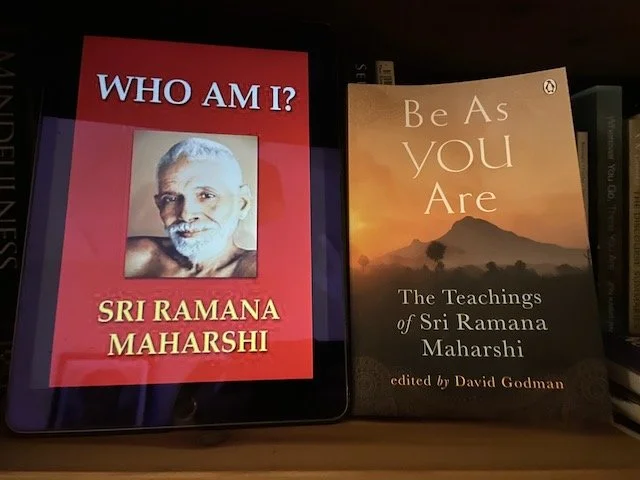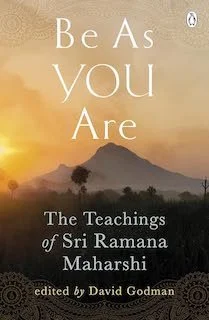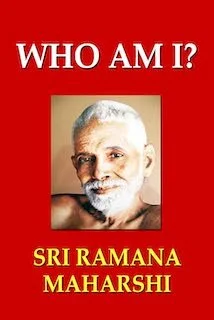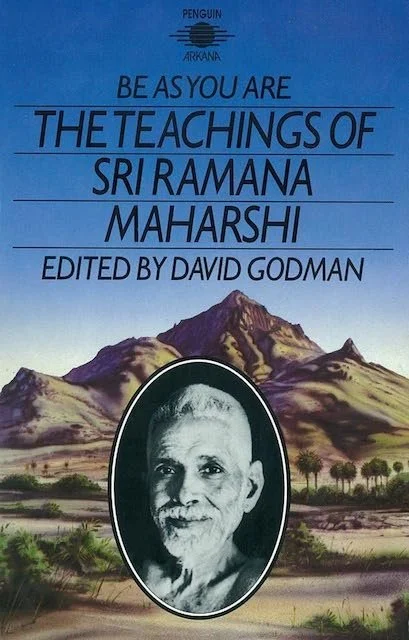Who Am I?/Be As You Are by Ramana Maharshi and David Godman
I've read two books in recent months that focused on the teachings of Sri Ramana Maharshi. So instead of compiling two posts, I thought it would be handy to combine them into a single review. The two books in question are 'Be as You Are- The Teachings of Sri Ramana Maharshi, edited by David Godman. And the appropriately titled 'Who am I' which features a set of answers and questions from the famous Indian guru.
Who was Sri Ramana Maharshi?
He was originally known as Venkataraman and was born into a middle-class Indian family in the small town of Tiruchuzhi around 1880. He seems to have had a normal childhood, but after his father died when he was twelve years old the family moved to the larger city of Madurai.
It was at the age of 16, when at his uncle's house, that Venkataraman had a spiritual awakening. He later said he was overcome by an intense fear of death, but instead of panicking, he lay down on the ground and examined the feeling. He looked at death in terms of what would die, and what would survive. By asking these questions, using self-enquiry, he experienced his own awakening. He could see that his own nature was infinite, and not related to the body or mind, which would both die.
Venkataraman was gone - he had no identity, and this feeling of awareness of his true nature, the self, never left him for the remainder of his life. But bear in mind that he was only 16 when this happened, and had no real frame of reference for it. At the time he thought he might have been possessed, or caught a disease. He didn't tell anyone and tried to keep up with school.
But he found himself completely absorbed with this awareness of self, and in 1896, at the age of 16, walked out on his life and family and set off to the town of Tiruvannamalai and the nearby mountain, Arunachala, which was a pilgrimage site. He would never leave it.
Arunachala in the background on this cover
Samadhi
He gave away all his money and worldly possessions and it seems that he devoted himself to his formless consciousness, sitting in a state of Samadhi. So deeply absorbed was he that he forgot about looking after his body or even eating, and only survived because others took care of him.
Early on it seems that he barely spoke, but his ascetic lifestyle and the silent power or teaching that emanated from him meant he attracted some followers. It would appear that just being in his presence was enough to give people a direct experience of their true nature. Slowly over the years, an ashram was established and more visitors arrived. He worked around the ashram and interacted normally with people.
From 1930 until his death in 1950. Maharshi was seen as one of the most famous Indian gurus and had a constant stream of visitors. Most of his teachings came in the form of question-and-answer sessions with these. It is these that form the basis of his teaching, although it seems that Maharshi never saw himself as a guru.
Who am I?
All living beings desire to be happy always, without any misery. In everyone, there is observed supreme love for oneself. And happiness alone is the cause of love. In order therefore, to gain that happiness which is one's nature and which is experienced in the state of deep sleep, where there is no mind, one should know oneself. To achieve this, the Path of Knowledge, the enquiry in the form of 'Who Am I?' is the principal means.
Even though this Ramana Maharshi book is only 18 pages long, it took me quite a few days to read it and I'm still constantly referring to it. I'll never be 'finished' with it in the sense that the wisdom is so perfectly distilled and powerful. It consists of a series of question-and-answer sessions between the guru and various disciples.
What is self-enquiry?
Firstly, it shouldn't be easy. Asking the question 'Who am I?' is like dropping a stone into a very deep well. It's not a mantra, but a method of self-enquiry to encourage you to dissipate the ego and discover your self. Who is the one thinking the thoughts? Where did the thoughts come from?
It's frustrating, no doubt. The answer doesn't consist of thoughts but is felt at an experiential level. There are times I've been completely exasperated by the process, which seems simple but certainly isn't. I keep coming back to Ramana's gentle, persistent answers. If it seems repetitive it's because he was continually asked the same questions because seekers experienced the same problems. There are times when reading their questions that I felt their frustration!
The book will encourage you to keep looking into the nature of the mind. There may be only 28 questions and answers but the process is like dropping a depth charge into your mind. This book struck a deep chord within me and continues to do so. It might just be the only book you need to read on the subject.
Amazon US Amazon UK Amazon AUS
Be As You Are
'Be as you are' is a more detailed collection of conversations between Sri Ramana Maharshi and his disciples, edited by one of his students, David Godman. Each part explores an aspect of his teachings, including meditation, gurus, god, karma, yoga, suffering, and morality.
The chapter I was most interested in was part 2, which goes into some depth on self-inquiry, expanding on 'Who am I?' Of course if you understood the previous book you wouldn't need this one, but humans are curious creatures and not all of us can understand something so powerful so immediately. Anyway, I find the process so fascinating that I'm eager to drink in all I can about the subject, and there's plenty of detail on the theory, practice, and misconceptions of self-enquiry.
David Godman is skilled at placing each of the dialogues in a context. - I really appreciated his explanation of the meaning of various Sanskrit words and their definitions, such as Sat-chit-ananda or Brahman. He does a fine job at taking the answers to various questions and compiling them into connected chapters - I feel I can lift this book off my shelf when I have a specific query and will be able to find it.
There are times when the book seems repetitive but I think that's because the famous India guru was often asked the same question, just from a different angle. Some of the questions were more esoteric in nature and I skipped over parts of them but generally, I was able to follow them. But like I said previously, it's a good book to have for the shelf to refer to.
Amazon US Amazon UK Amazon AUS
Summary
So two Ramana Maharshi books with a profound teaching, still as relevant as ever. But no matter how many times to read it, it's important to realize that the transmission can't be understood intellectually. Taking time to understand the message, meditating upon it, and taking on the enquiry we can get to the heart of it - simply by asking: Who Am I?





